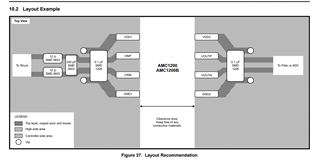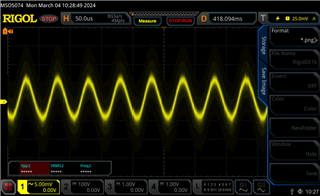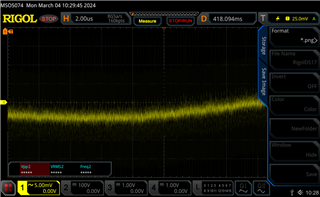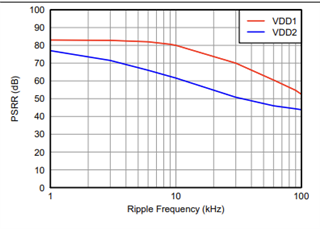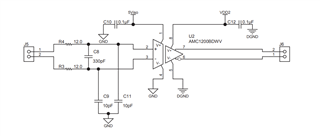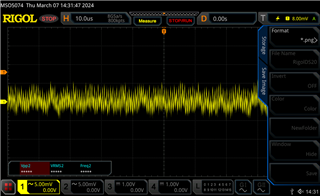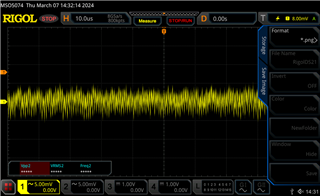Other Parts Discussed in Thread: , AMC1300
Hi,
We built a own evaluation module with the AMC1200 for testing purposes and we encountered more noise than we expected.
The question is, where the noise comes from and if the noise is "normal", so that we just need proper filtering.
We use an isolated DC/DC converter to produce the AMC1200 input supply of 5V, and that seems to work fine.
Schematic:

Layout (Note that we have once the GND plane on the input stage under the IP+- traces and once without, but the noise is exactly the same):
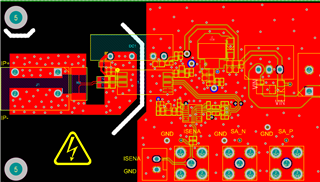
We are measuring the noise with a SMA connector and a short coax cable, so it is definitely not a measurement issue and the noise is the same on all board. Further we supply with a linear low noise power supply that we use a lot for such measurements. The only other candiat for the noise could be the IB0505LS-1WR3, but since the transmission is differential and the AMC1200B has good PSRR, that should not be the problem here.
Note that there is no current through the AMC1200B Input shunt in the following measurements:
Measurement on VoutN:
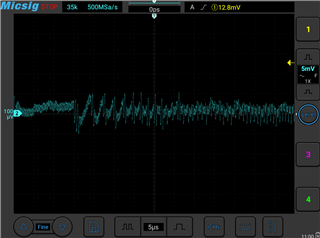
Measurement on VoutP:
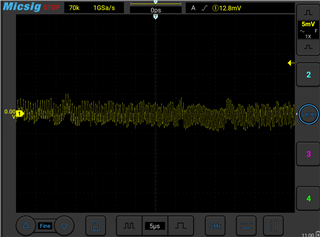
VoutP - VoutN:
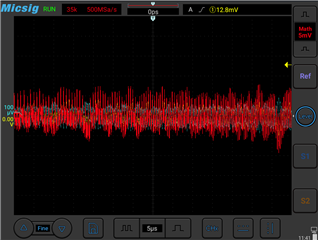
Can you tell me, if this is the normal noise of the AMC1200? In the datasheet it states around 3.1mVrms output noise, which seems to fit with the measurement, but there is also the frequency dependent noise, which should be way less at the frequency we measure now (we are at around 200kHz or even more here)
Edit: I just removed the IB0505LS-1WR3 and the noise is exactly the same, so there when the input side is powered, there comes immediately the noise from the previous measurements.


